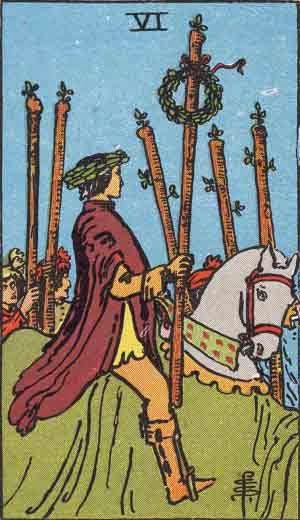 |
| Four of Cups |
Once, when I was fishing with my father and brother at Dinkey Creek, I put down my pole and sprawled on a smooth stone. I was fourteen at the time, and I remember feeling stressed from a rough week in middle school. On the cool stone, as I gazed at the pine trees and listened to the stream, suddenly all tension slipped away--as if the surrounding trees were breathing tranquility into me, and my consciousness ballooned. The pine needles were glittering in the sunset, and I sensed the trees and I were part of innumerable fields of living, light-filled energy. I was totally inspired, as though a god had breathed into me, and I felt connected to all things.
My father turned his thumb toward me and muttered to my brother, “Why can’t you be more like him?”
My father and brother stared at me. Was my dad actually glaring at me? I couldn’t tell for sure, but I realized that my inspiration had somehow become apparent to them both. I felt like I was emanating light and love, but I was at a loss for words. I realized that any attempt to explain my exaltation would only diminish it.
 |
| Three of Cups |
I developed a thirst for inspiration at a young age. The flashes of exaltation often left me with the sense that daily life was stale and dull, but in retrospect I realize that each inspiration provided an expansion of consciousness that never completely diminished. I eventually discovered that every time I made myself available to moments of inspiration--in nature, in ritual, in meditation, and through the arts, I opened the door a little more for higher consciousness.
 |
| Tree of Life |
Only when I began having visions of archetypal symbols that represent spiritual principles did I realize that these moments of profound inspiration were related to a state of being on the Tree of Life known as Tiphareth, the sphere of the Sun and the higher self. Since the term “higher self” has been so over used that I believe it now has little meaning, I am choosing instead the term “inspired self,” which suggests the "immediate influence of God or a god," (from the Latin spīritus, breath, spirit) and suggests as well the inebriation of ecstasy, joy, exaltation. (Being “inspired” is similar to being “enthused,” literally “possessed by a god.”)
Recently during meditation I envisioned my soul radiating light like the sun: I felt free, without labels or limiting beliefs, without need for anything better. Then suddenly a golden plate and chalice on a white tablecloth appeared in front of me. A golden, equal-armed cross with a brilliant light around it floated to the right of the chalice. Finally, in my mind’s eye, I saw a golden crown on the white tablecloth. Tiphareth is the Sphere of the Sun, the source of light and life, and gold, which is incorruptible and does not tarnish, is the mineral associated with that state of being. The symbols in my vision reveal the magnificence, harmony and abundance within the human spirit. I also had an epiphany about why I was experiencing the vision: Cumulatively, the moments of inspiration expand consciousness until higher psychism is possible.
I consulted my dog-eared copy of The Mystical Qabalah. According to the author, Dion Fortune, in Tiphareth we find the archetypal ideas behind creation that have emanated from the higher planes. Fortune refers to Tiphareth as the “Treasure House of Images on a higher arc” while making this critical distinction: “but whereas the astral plane is peopled by images reflected from forms, the images of the Sphere of Tiphareth are those formulating, and as it were crystallizing out, from the spiritual emanations of the higher potencies" (The Mystical Qabalah 189).
The lower astral plane reflects the forms within the human mind and the physical plane. The mind during moments of higher psychism in the Sphere of Tiphareth, on the other hand, rises above the lower astral plane to the archetypal ideas emanating from the higher states. Tiphareth, (“Beauty” in Hebrew), is the transition point between the states of force and form and also functions as a point of equilibrium on the Tree. The astral forms of archetypal symbols in Tiphareth, such as the golden, equal-armed cross, embody the spiritual principles that emanate from the higher, formless Spheres.
 |
| Six of Cups |
 |
| Six of Wands |
Every human being can access the Christ-center by remaining open and honoring the multiple dimensions of the psyche. This requires sacrifice, which is the transmutation of force through a shift of focus, a different use of emotional and mental energy. This sacrifice is an aspect of the Mysteries of the Crucifixion, one of the two spiritual experiences of the Sphere of Tiphareth, the other being the Vision of Harmony--the internalization of the harmony, magnificence, and abundance of the human spirit and the cosmos, which occurs in the temple of exaltation.